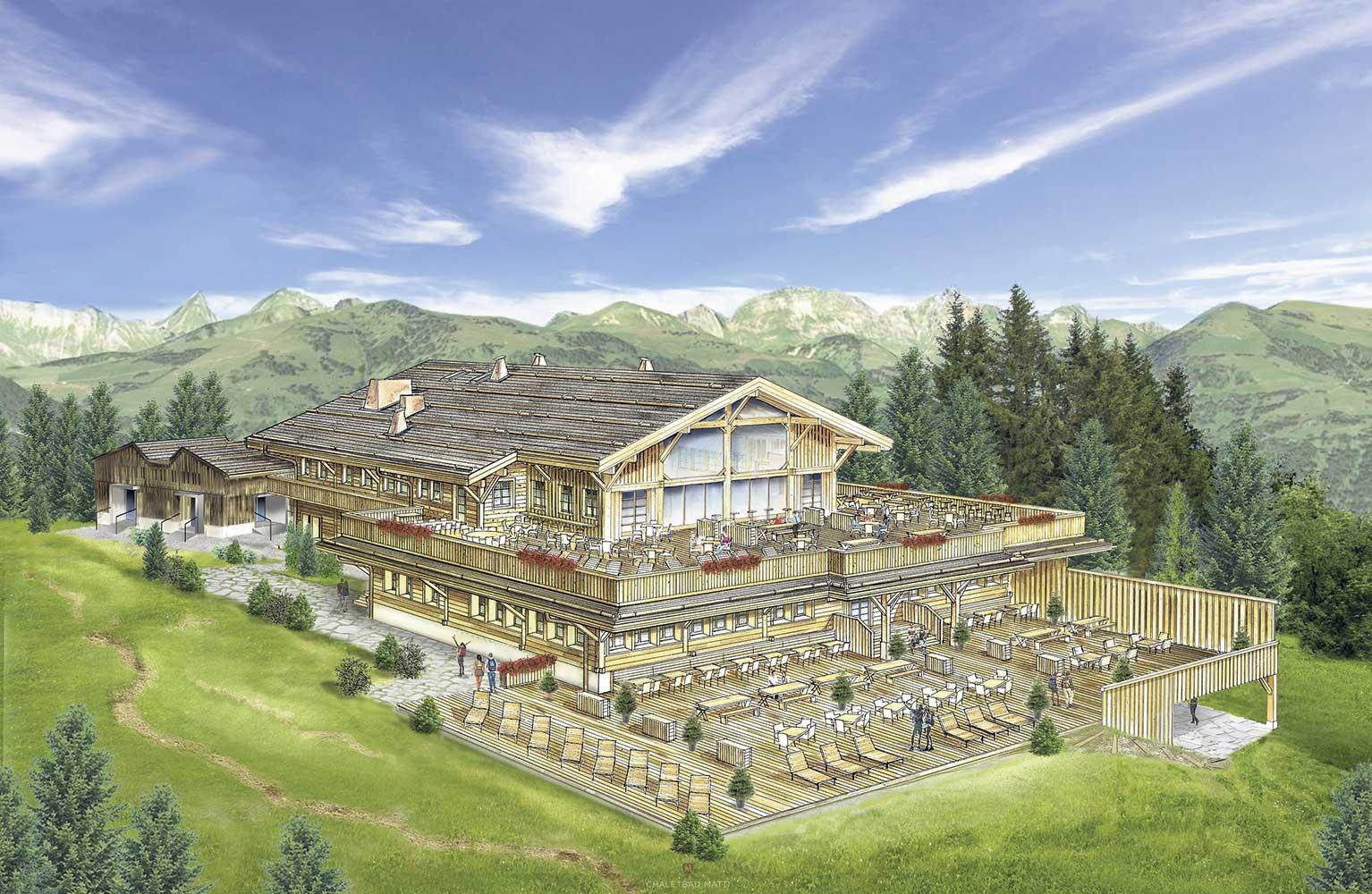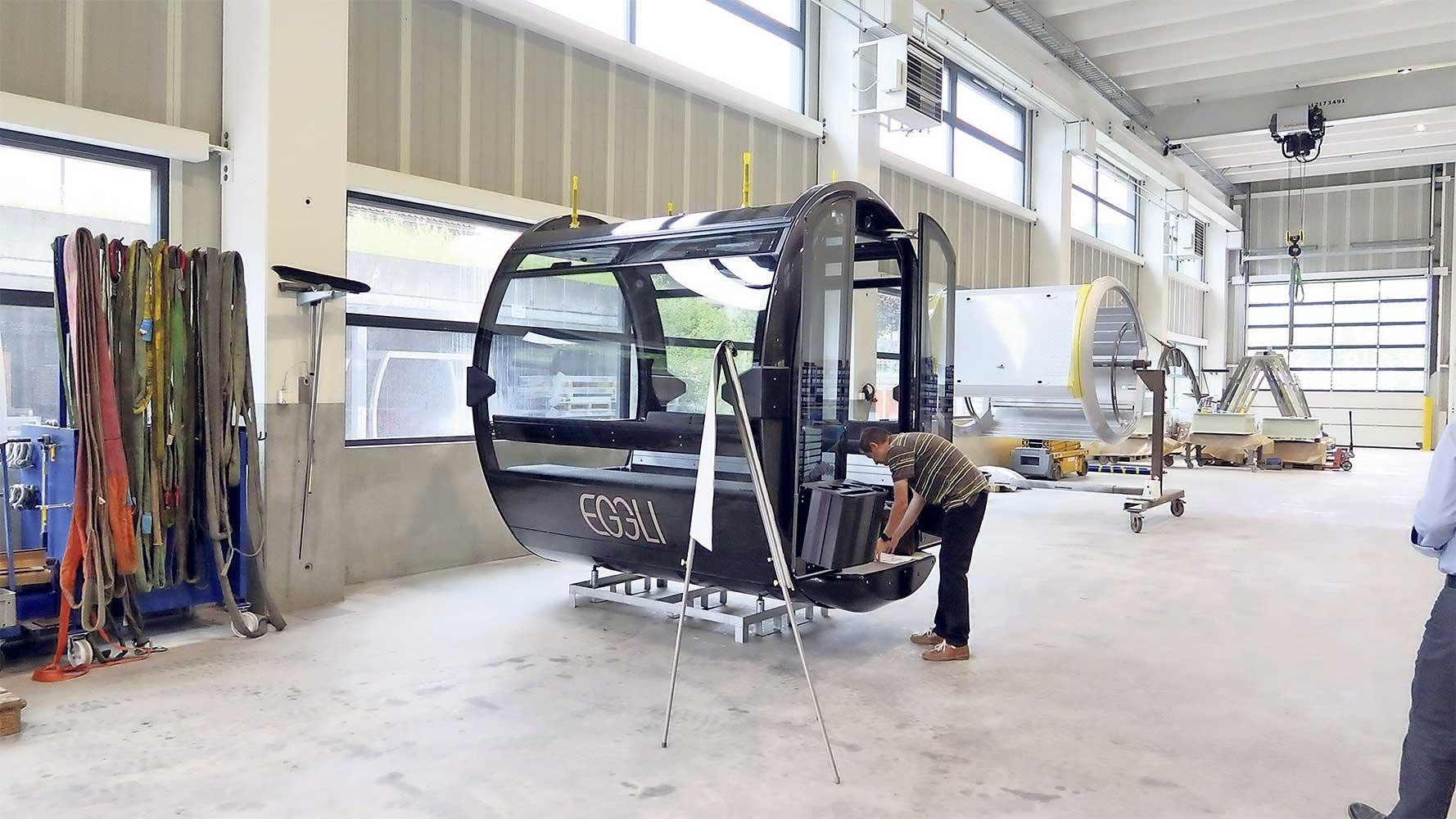No new building without investors
16.08.2019 Gstaad LivingInvestors play key role
The construction of the gondola lift and the mountain restaurant has only been able to go ahead thanks to two organisations comprising Gstaad visitors. These are the Société pour la Préservation de l’Eggli (SPE) and the Club de Luge. During the planning for refurbishing the BDG, it became clear that they couldn’t afford the new building. So, supporters of the Eggli grouped around Michael de Picciotto to take action. “Six founding members sat down together to work out solutions,” said the project’s initiator. “Had we failed to act, the Eggli would probably not be here today,” he guessed. Heinz Brand confirmed this: “Without the investors, there would be no new building. So, thank you!”
Along with Mani Raaflaub, Heinz Brand and the municipality, the two organisations were searching for solutions at that time and fleshed out the new building plans. They also looked for investors and made plans to further develop the Club de Luge. Today, the club has 400 members. “The project is ambitious and it needs each and every one of us”, said vice-president of the Club de Luge, Diana d’Hendecourt, explaining the high number of project participants.
The investors haven’t revealed the extent of their contribution. Two builders, BDG and SPE, are behind the construction of the Berghaus, which is freehold and costs the SPE CHF 2m. The organisation is also reconstructing the restaurant to which the BDG will contribute around CHF 3m. “That’s relatively little when put into perspective and we’re grateful for this,” said Heinz Brand.
The SPE is also participating in the construction of the new cable car and has pledged a sum of CHF 6m. The BDG is also reaching deep into its pockets, investing around CHF 14m. The SPE’s public commercial trade record reveals that Michael de Picciotto is chairman of the board. Also on the board are Ernesto Bertarelli, Rémy Best, Naveda Botin-Sanz, Emanuele Campanini Bonomi, Andrea Coelho de Botton, Alfonso Cortina de Alcocer, André Desmarais, Lawrence Sheldon Strulovitch and Diana Thermiotis Filesari.
A solution-oriented approach
“There were some tricky issues during the planning phase, but we always worked to find solutions,” said Brand, referring to the investors, the municipality and all of the entrepreneurs. Special thanks go to the landowners, who have to deal with the impact of the construction site on a daily basis. He also praised the companies that are participating in the construction at a level of five percent of the total order amount. Brand said: “This contribution means that the companies have a deep commitment and the BDG is well-anchored in the region.”
Awarding the building work to the various companies pleased the chairman of the board a great deal: “90 percent of the construction costs were awarded to local companies.” The architects also come from the region. Reichenbach Architekten AG from Saanen won the architectural tender for the valley and mountain station. The Berghaus was planned by Chaletbau Matti.
BDG managing director, Matthias In-Albon, offered a brief insight into the complexity of the project. “The approval process was very demanding and took three years.” But this is now complete and the construction work is in full swing: In March dismantling work began and in April, the building material arrived. The rather damp weather in the spring was a challenge, delaying the construction.
Sustainable construction for the Berghaus
On the ground floor of the Berghaus, locals and guests will be able to enjoy the public restaurant from the winter of 2020/21. The Club de Luge is on the first floor. When asked if this would foster the two-tier system, mayor Toni von Grünigen replied: “All guests will enjoy the same view, whether they’re in the public restaurant or the Club de Luge. Therefore it would not be correct to speak of a two-tier system.” It became clear during the negotiations that the BDG would not have been able to build without the investors and vice versa. So, the project is a win-win opportunity for both.
“We have a sustainable design innovation for the first time in our region’s recent architectural history,” said Daniel Matti of Chaletbau Matti. “We’re building a huge timber construction with no concrete core.” This is unique for a chalet of such a size. “Using sustainable building materials means we’re pursuing an important environmental aspect.” Equally important to the builders is to ensure the guests feel at home on the Eggli, which has been integrated into the design and facilities.
Enthusiastic about the future
Both BDG and investors are extremely positive about the future. “We’re enthusiastic about the work and look forward to the project,” beamed de Picciotto. d’Hendecourt said: “ There’s no other Club de Luge like this anywhere in the world and the same goes for the toboggan run, which is also being planned.” Neither of them will reveal the precise plans. “We’re in the middle of planning,” explains de Picciotto.
Various permits are required to secure partners. He talks about a toboggan run with new tracks, which could be used by both the club and the public. Artificial lighting will be provided so it can be used after dark. Also, it will be equipped with snow guns, so the run can be prepared in different weather conditions.
Although the Club de Luge is planning races, there’s no intention to create a professional bobsleigh track like in St. Moritz. Rather, the toboggan run is intended for both young and old. The precise time of construction depends on various factors such as the approval process, which is hard to predict. By contrast, the new gondolas by Porsche will be in operation next winter.
Based on AvS/Blanca Burri
Translated by Justine Hewson







